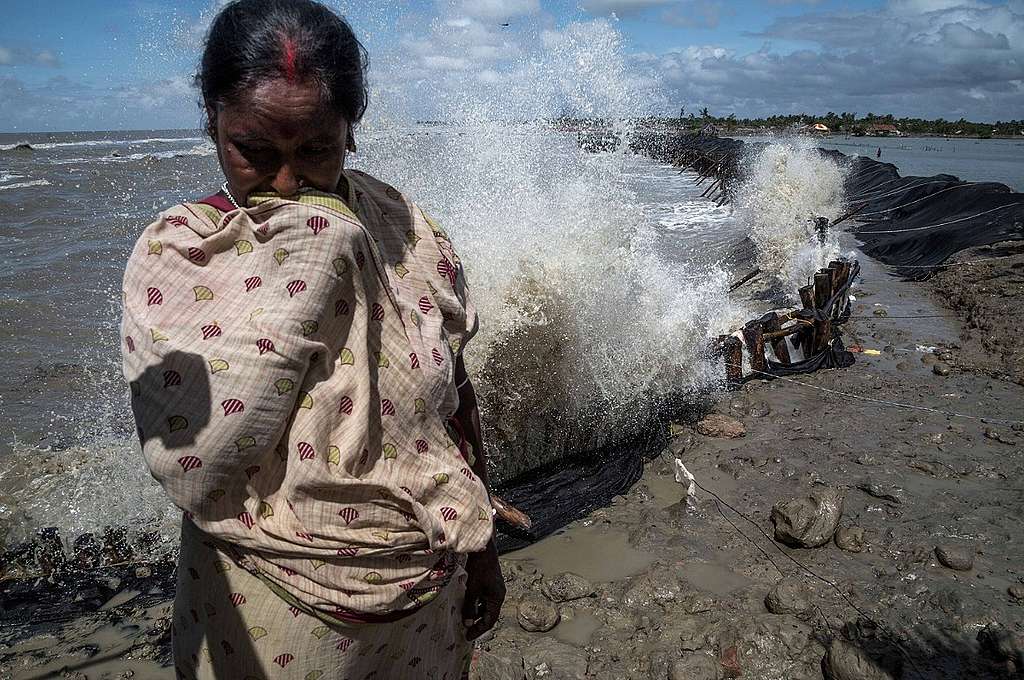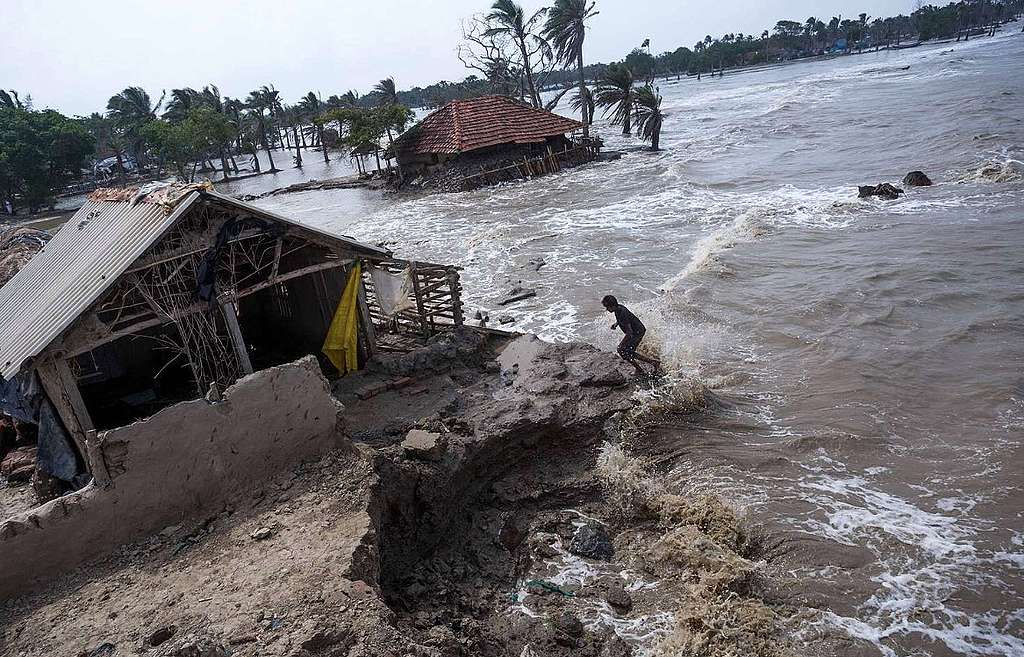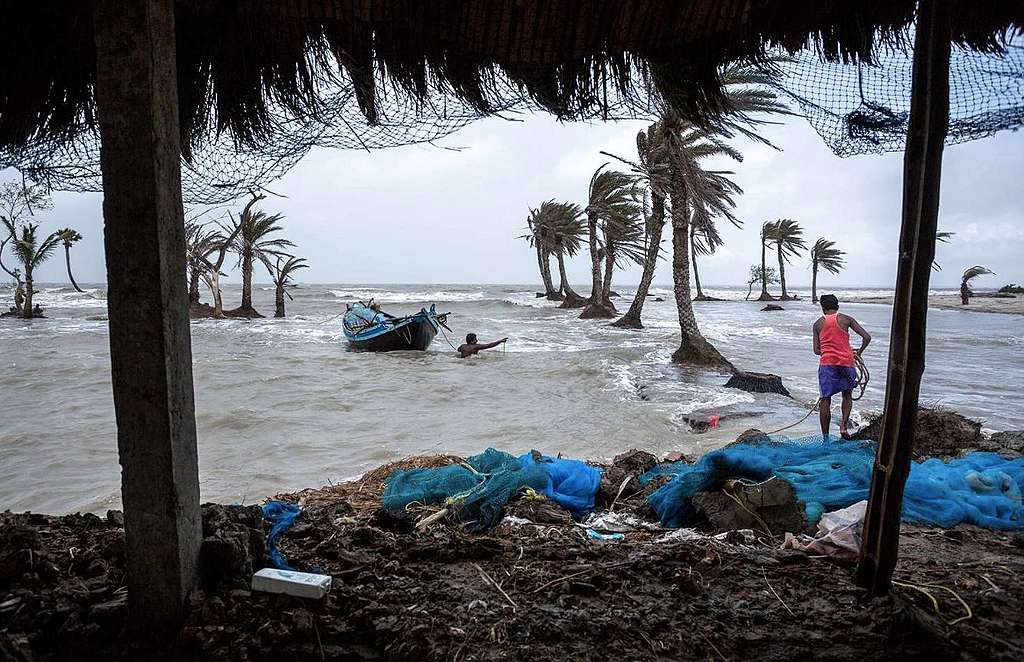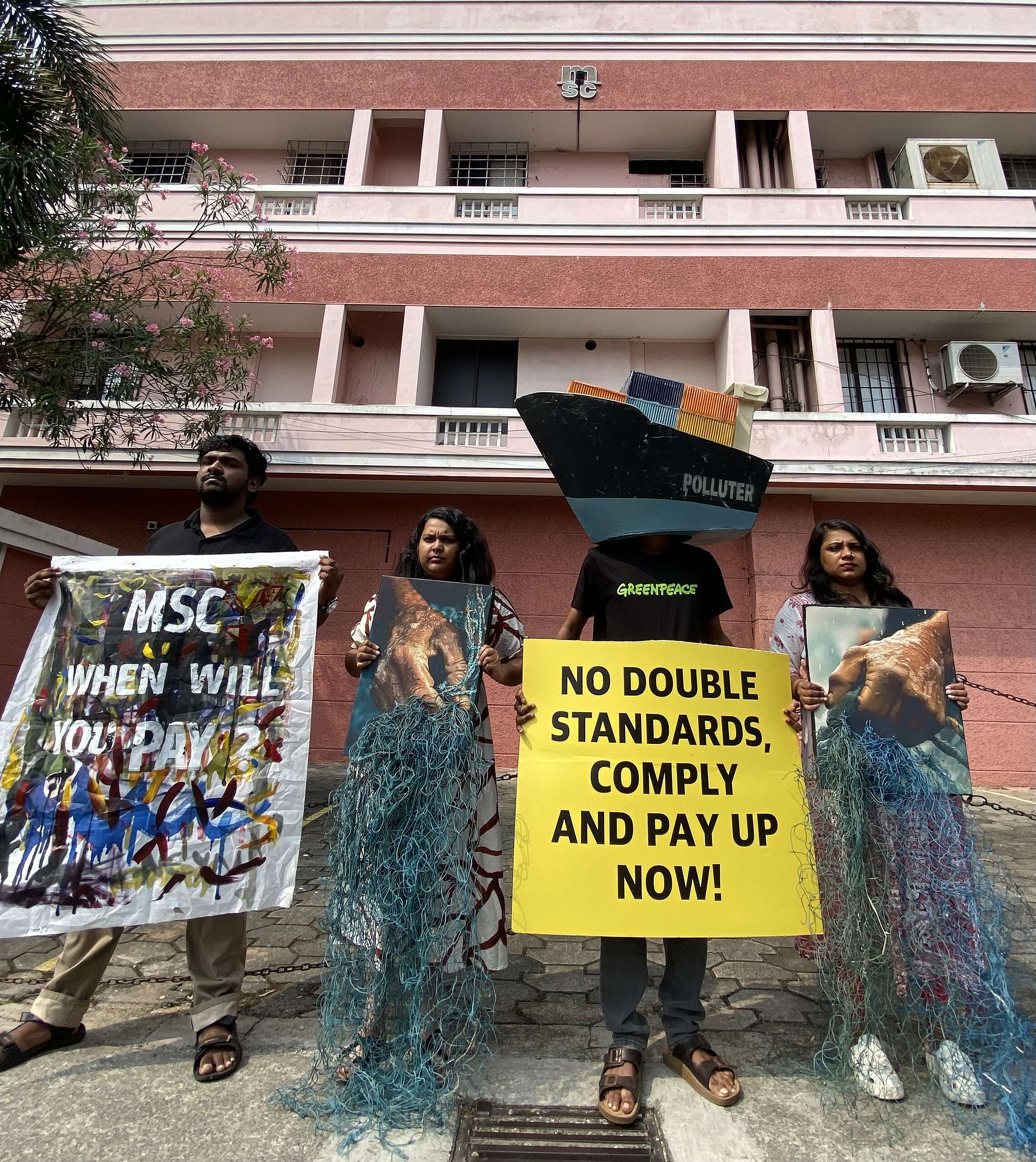Greenpeace Intern presents testimonies from the cyclone-affected Sunderbans
On 20th May 2020, Amphan cyclone began its landfall, from 2:30 PM, with sustained wind speeds of 155-165 kmph spiraling up to 185 kmph. The cyclone has caused immense destruction; in West Bengal, 86 people lost their lives and the state has suffered a financial loss of around 1 lakh crore. Apart from that, individuals had to take severe damages caused to their properties due to the electrocution, falling trees, and collapsing structures.
Cyclones are not a rare phenomenon in India. In the recent past, India has faced several cyclones, like Fani, Hudhud, Bulbul, and Aila and so on and each cyclone has caused massive destruction in different states. As these are unprecedented times, where the entire nation is struggling to curb the escalation of COVID-19 cases. Amidst all the turmoil, the states of West Bengal and Odisha had encountered another crisis, the super-cyclone AMPHAN. Till date, AMPHAN is the strongest cyclone that has originated in the Bay of Bengal.
Here I, present a few testimonies from the affected region:
- Yeanoor Gazi from Bongaon:
I am a small farmer, with only 2 acres of land and I am the only earning member in my family. The impact of the cyclone has been devastating for our family. There has been a tremendous loss as the cyclone destroyed all our crops. There was waterlogging in the fields for more than 5 days, because of which all the vegetable crops were destroyed. Not only that, but the strong winds also blew away the tin sheet and as a temporary solution, we have arranged for a tarpaulin as a rooftop. Post-Amphan, there was no electricity for a week, and even now we are facing electricity issues. So far, we have not received any help from the government or other aid groups, however, we are hoping and looking forward to receiving some support as everyone out here is in a very vulnerable position. In my 40 years, I have never seen a disaster like this.

- Bikash Chakravarty from Paschim Midnapore:
My house is near the river Kangsabati and I am a small farmer. The cyclone has created havoc. Due to excessive rainfall, there was water logging, not just in my fields but also in my house. The water remained in my house for five days. However, we still have water logging in our field, because of which all our wheat crops are damaged. Previously it was the virus and the lockdown, because of which I could not harvest and now Amphan has destroyed all the crops. Due to the high wind speed, the mud wall of my house collapsed and the trees near my house broke my asbestos roof. Due to the overflow of the river and the uprooting of the trees, several fishes have died. We all are suffering from a double loss and we have no idea what we are going to do. These are really tough times for us. An NGO did come to provide some relief measures by distributing tarpaulins and few kgs of rice; however, it is not adequate.

- Nimai Charan Das from Purba Midnapore
Previously we have encountered cyclones like Aila; however, this one was very violent and destructive. I am mostly engaged in the cultivation of betel leaves (paan) and I have incurred a huge loss as all the betel leaves were destroyed due to Amphan. As a single earning member, with 6 people in my house, I am experiencing huge pressure as the loss is unimaginable. Not just that, the thatched roof of our cattle house got blown away due to the strong winds and there are cracks in the tin sheets. Although we did hear about the cyclone in the news, yet it was impossible to take any preventive steps to avoid these damages. At that point of time, our priority was to save our own lives. There was no electricity for more than a week. We have tried contacting the local party office for support and financial help. We are yet to hear back from them.

It is well known geographically, cyclones are fueled by heat. Warming seas can make cyclones more powerful by increasing the potential energy available to them, effectively increasing their speed and ability to cause havoc. Perhaps, cyclones such as Amphan are related to climate change possibly due to rising sea levels, increasing the size of the depression, and wind speeds. Climate experts are also of the view that climate change is increasing the damage that cyclones cause. It is need of the hour that climate protection is treated as more important than ever.
( Aniket Shaw is from Kolkata, West Bengal, and is working as an intern with Greenpeace India. He is a student and is currently pursuing his Masters in Natural Resources and Governance from Tata Institute of Social Sciences, Hyderabad. )



